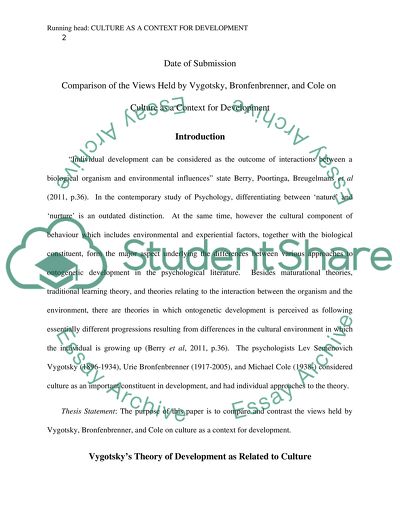Cite this document
(“Comparison of the Views Held by Vygotsky, Bronfenbrenner and Cole on Essay”, n.d.)
Retrieved from https://studentshare.org/psychology/1444175-1-compare-and-contrast-the-views-held-by-vygotsky-bronfenbrenner-and-cole-on-culture-as-a-context-for-development
Retrieved from https://studentshare.org/psychology/1444175-1-compare-and-contrast-the-views-held-by-vygotsky-bronfenbrenner-and-cole-on-culture-as-a-context-for-development
(Comparison of the Views Held by Vygotsky, Bronfenbrenner and Cole on Essay)
https://studentshare.org/psychology/1444175-1-compare-and-contrast-the-views-held-by-vygotsky-bronfenbrenner-and-cole-on-culture-as-a-context-for-development.
https://studentshare.org/psychology/1444175-1-compare-and-contrast-the-views-held-by-vygotsky-bronfenbrenner-and-cole-on-culture-as-a-context-for-development.
“Comparison of the Views Held by Vygotsky, Bronfenbrenner and Cole on Essay”, n.d. https://studentshare.org/psychology/1444175-1-compare-and-contrast-the-views-held-by-vygotsky-bronfenbrenner-and-cole-on-culture-as-a-context-for-development.


